Solidago sempervirens – Seaside goldenrod
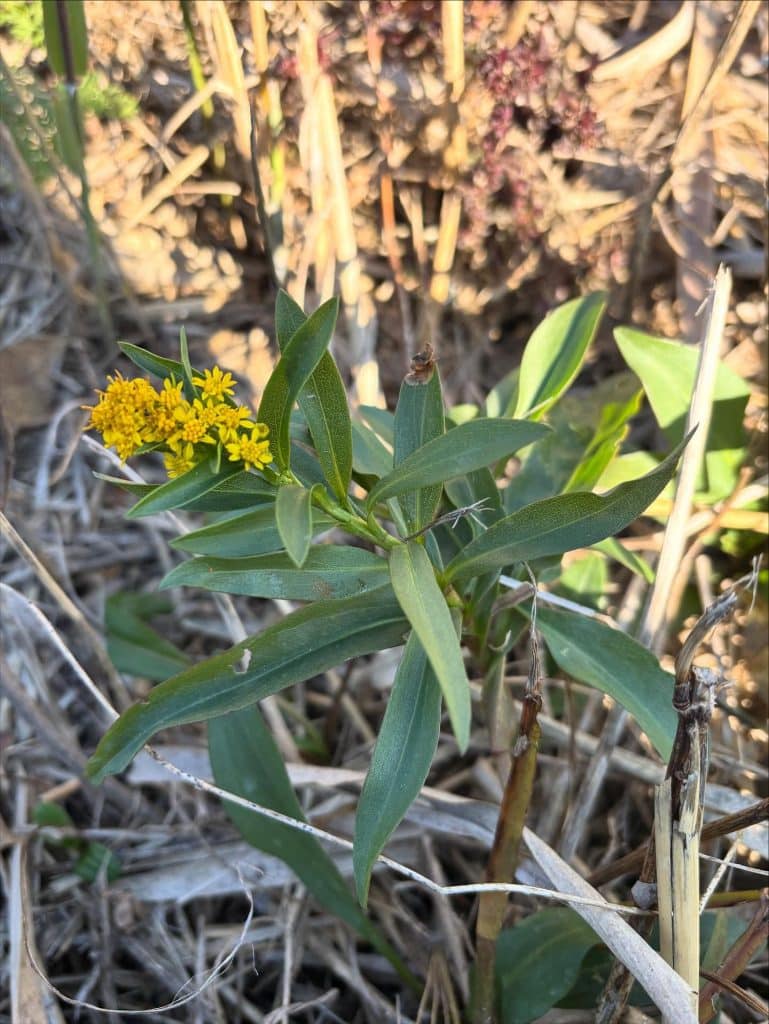
Seaside goldenrod (Solidago sempervirens) is a native perennial that can be found along the coast. It prefers full sun and sandy soils. Seaside goldenrod has waxy, somewhat succulent leaves. It produces yellow flowers in a pyramid shape from August-October. Seaside goldenrod produces larger flowers than other goldenrod species. Flowers are edible. They have a floral […]
Cryptotaenia canadensis – Canadian Honewort
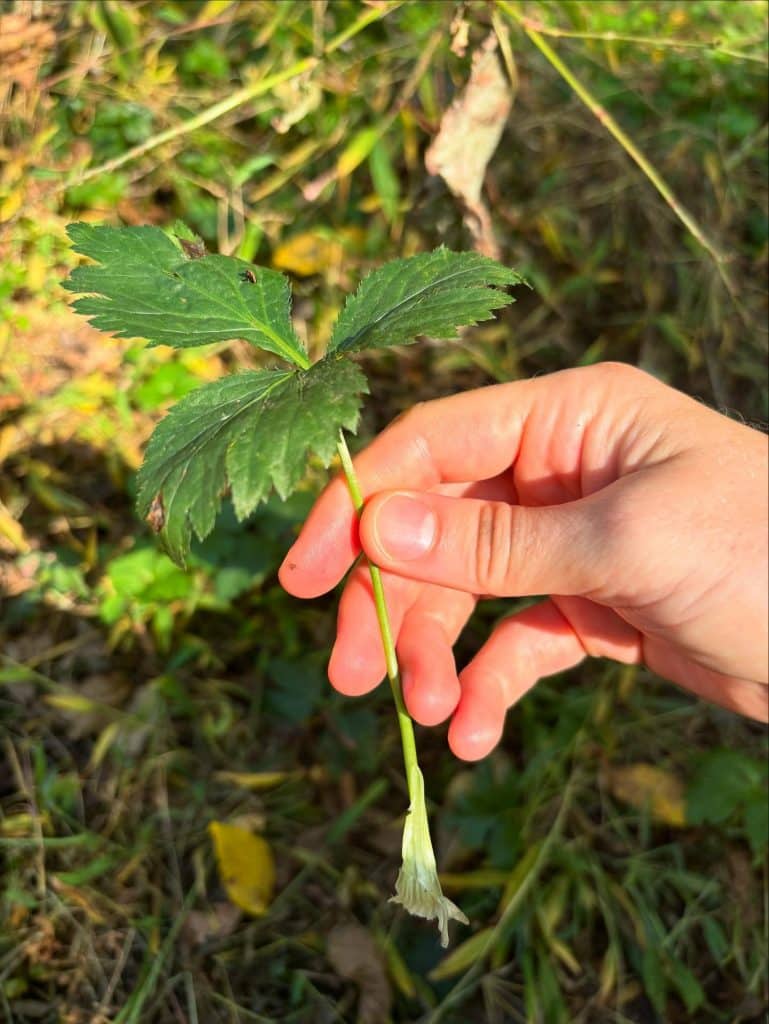
Mitsuba/Canadian Honewort (Cryptotaenia canadensis) is a native, edible perennial in the carrot family. Canadian honewort can be found in woodland areas with partial to full shade. It has toothed leaves that are divided into three leaflets. The stem creates a sheath at its base. The plant has a carrot-like scent when crushed. Umbels of white […]
Symphyotrichum novae-angliae – New England Aster
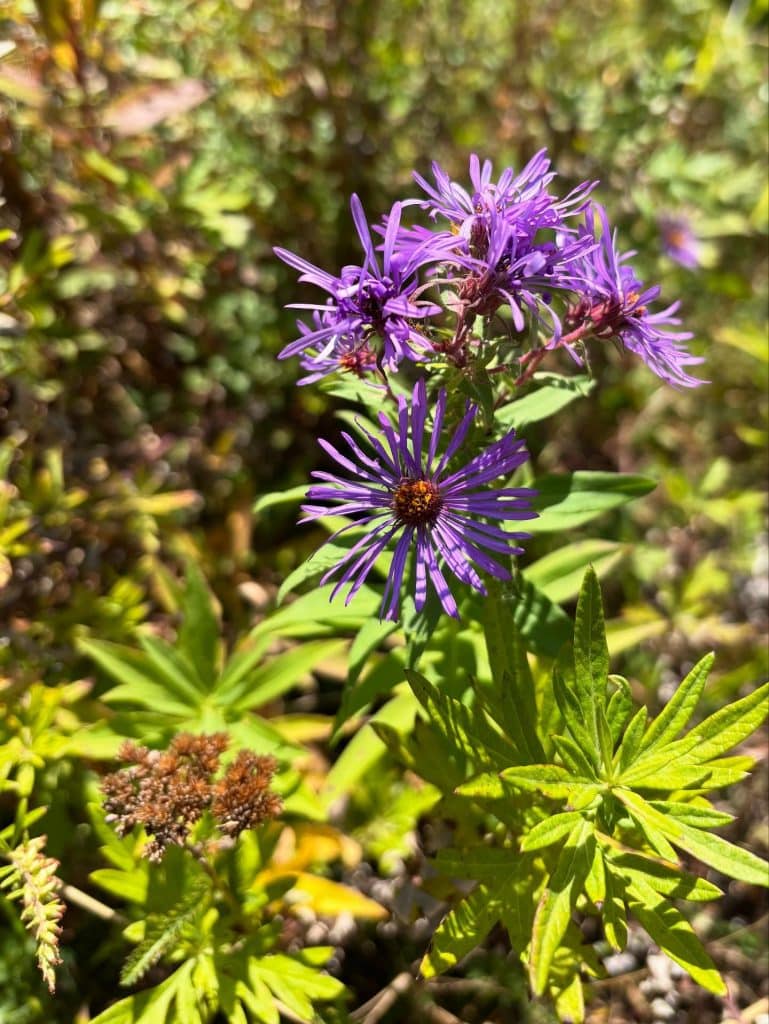
New England aster (Symphyotrichum novae-angliae) is a native perennial with late blooming flowers. New England aster can be found in open, sunny areas such as meadows and fields. New England aster is easiest to identify in the fall when it produces pale lavender to purple flowers with yellow centers. Stems and leaves have a […]
Helianthus tuberosus – Sunchoke
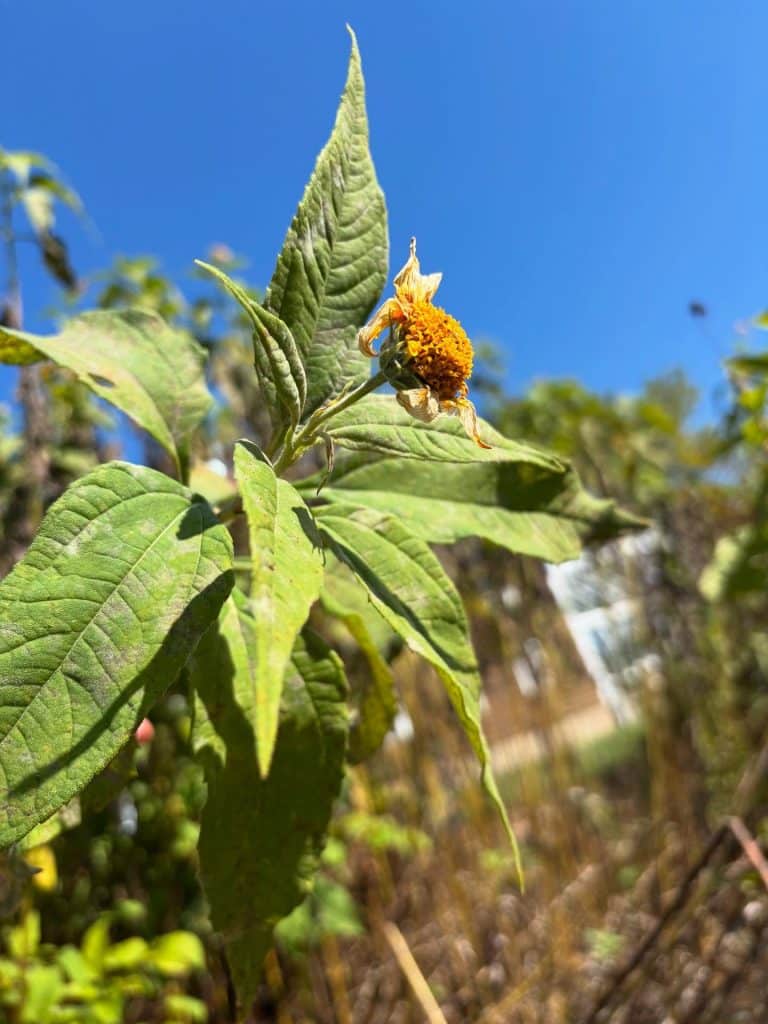
Sunchoke (Helianthus tuberosus) is a native perennial sunflower with edible tubers. Sunchoke, also known as Jerusalem artichoke, can be found in river floodplains and meadows with partial to full sun. Sunchokes grow up to 12 feet tall. Leaves and stems have a tough texture. Flowers have 10-20 petals and bloom August-September. Tubers are reddish to […]
Quercus alba – White Oak
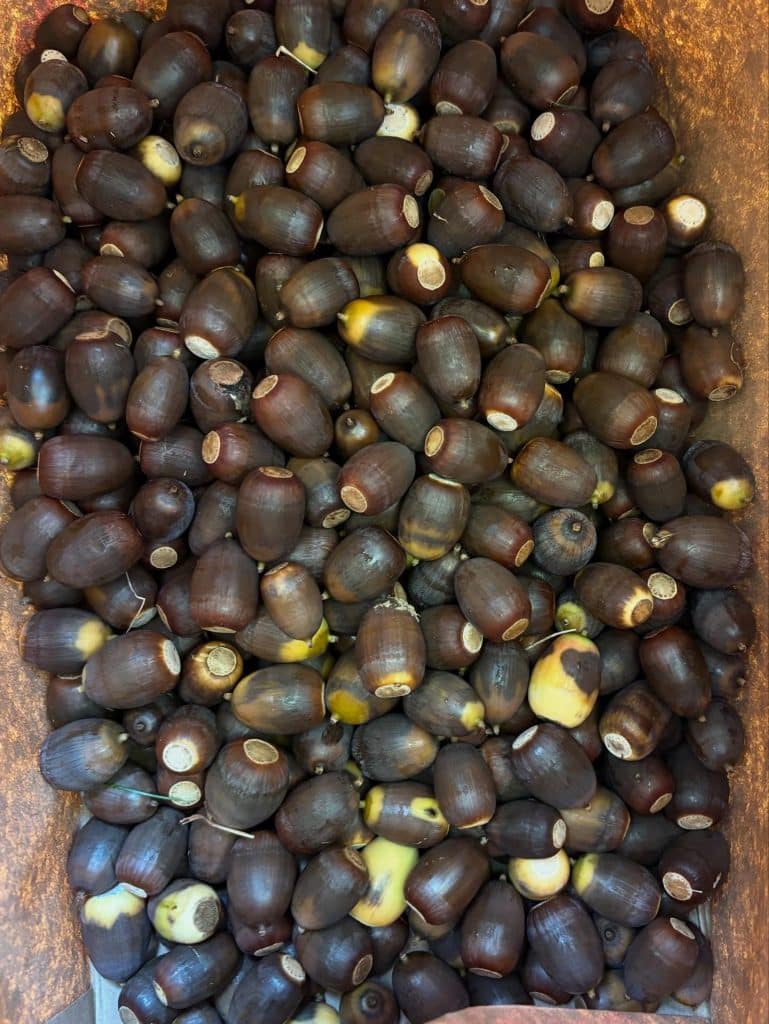
White oak (Quercus alba) is a large native tree with leaves with rounded lobes. White oak acorns develop in one season and fall off the tree in autumn. Red oaks develop in two seasons and tend to be more bitter. Acorns are edible, but high in tannins so must be hot or cold leached before […]
Pontederia cordata – Pickerelweed
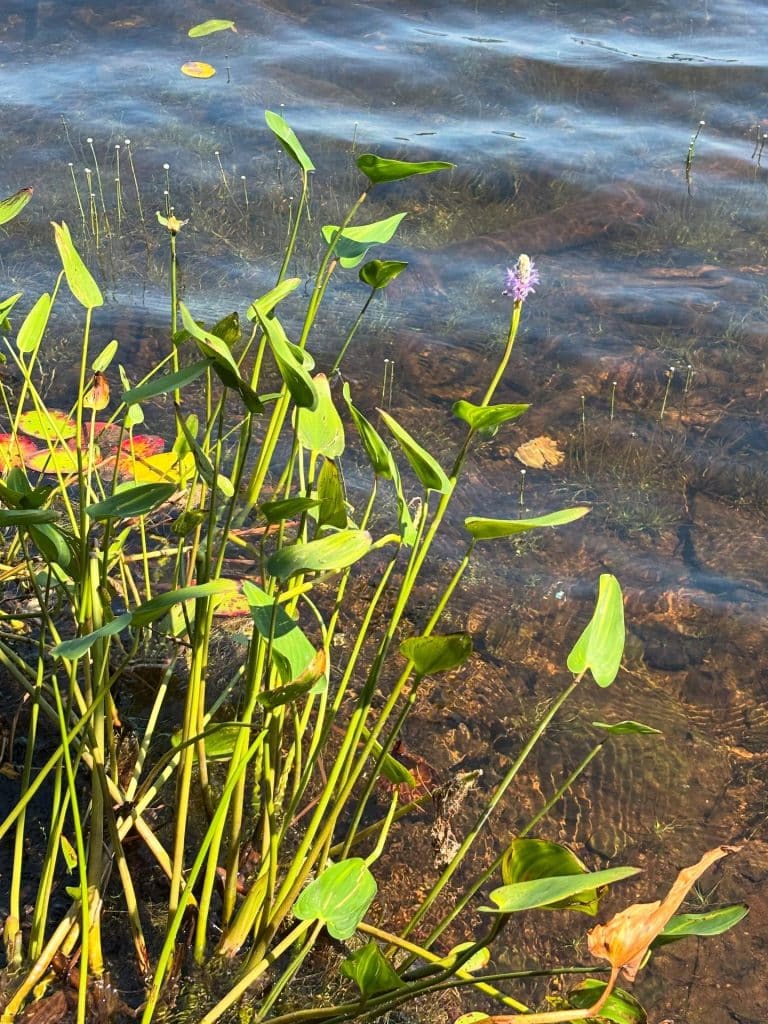
Pickerelweed (Pontederia cordata) is a native perennial that can be found in shallow water such as the edges of ponds. Pickerelweed can be identified by its heart-shaped leaves with rounded lobes. Clusters of lavender flowers shoot up above the leaves from flower stalks. Young leaves are edible raw or cooked. Seeds can be eaten raw, […]
Ceanothus americanus – New Jersey Tea
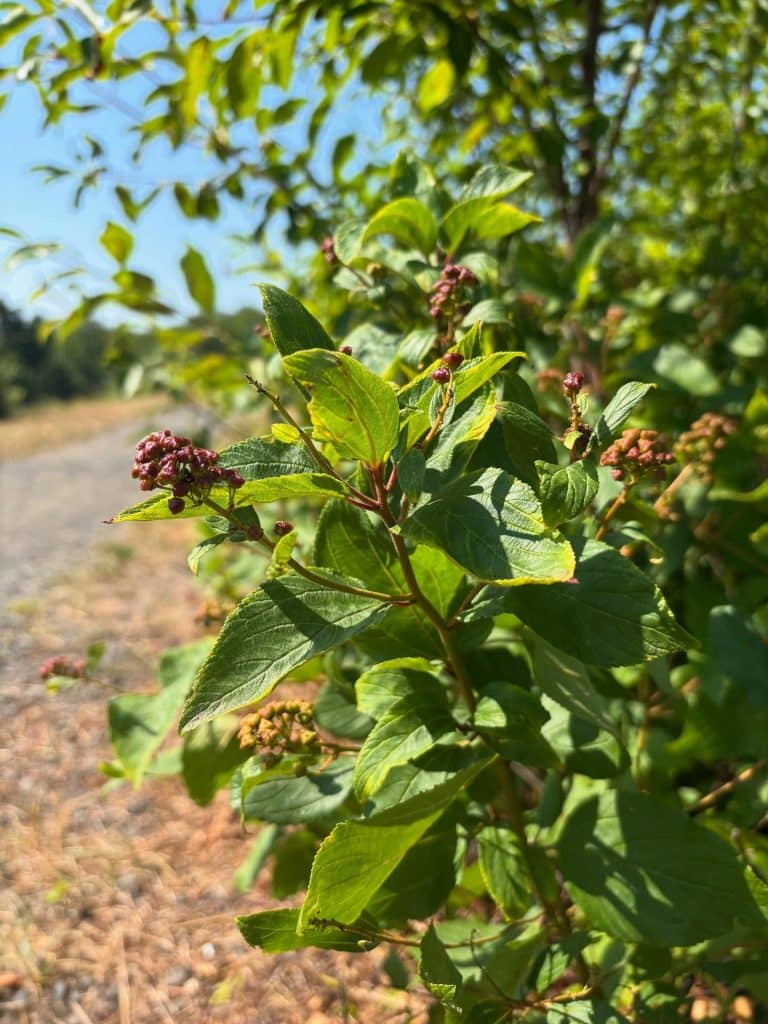
New Jersey tea (Ceanothus americanus) is a native shrub whose leaves were used as a caffeine-free tea substitute during the Revolutionary War. New Jersey tea can be found in dry soil with full sun. New Jersey tea can be identified by its alternate, finely toothed leaves that have three prominent veins. Older stems are reddish-brown. […]
Sagittaria latifolia – Wapato
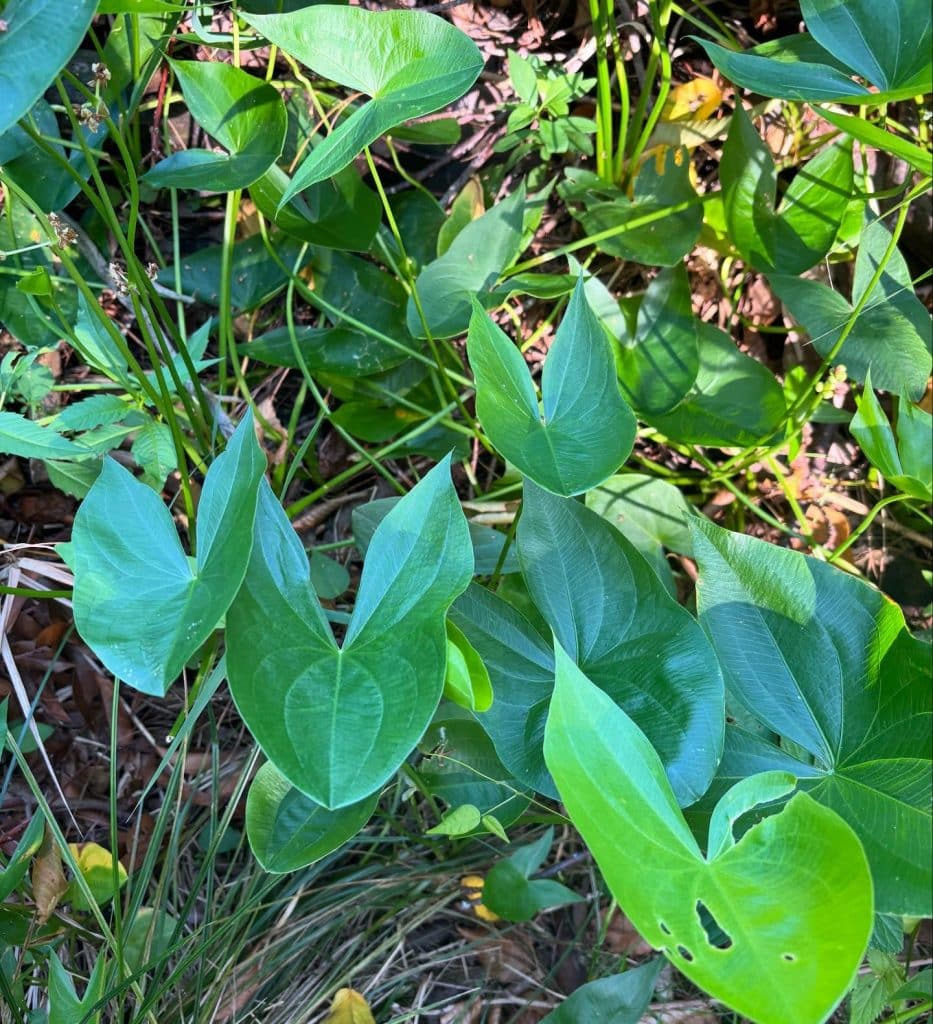
Wapato (Sagittaria latifolia) is a native perennial with edible tubers. Wapato, also known as “katniss” and “arrowhead”, can be found in or at the edge of water. It grows in river edges, marshes, ponds, and lakes. Wapato has arrow-shaped leaves with pointed lobes. It produces flowers in the summer which have three white petals and […]
Euthamia graminifolia – Grass-leaved Goldenrod
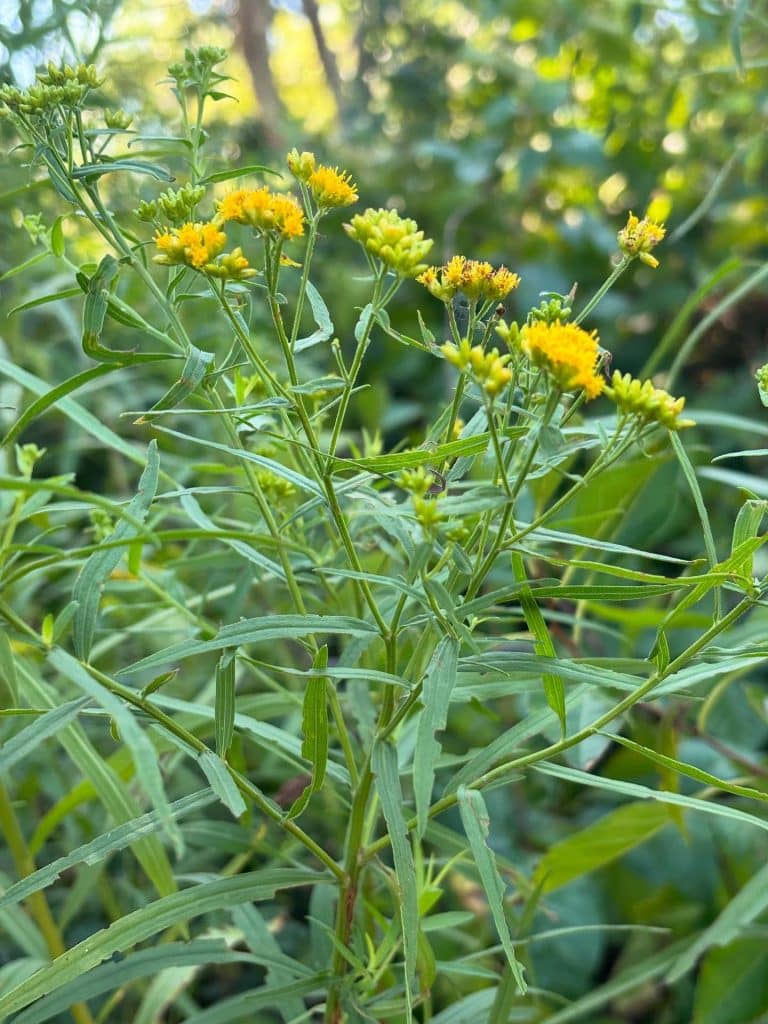
Grass-leaved goldenrod (Euthamia graminifolia) is a native perennial with edible and medicinal uses. The plant can be identified by its narrow, grass-like leaves and small yellow flowers. Leaves and flowers can be used fresh or dried to make a tea. Drinking the tea has been used to treat infections and chest pains.
Morus rubra – Red Mulberry
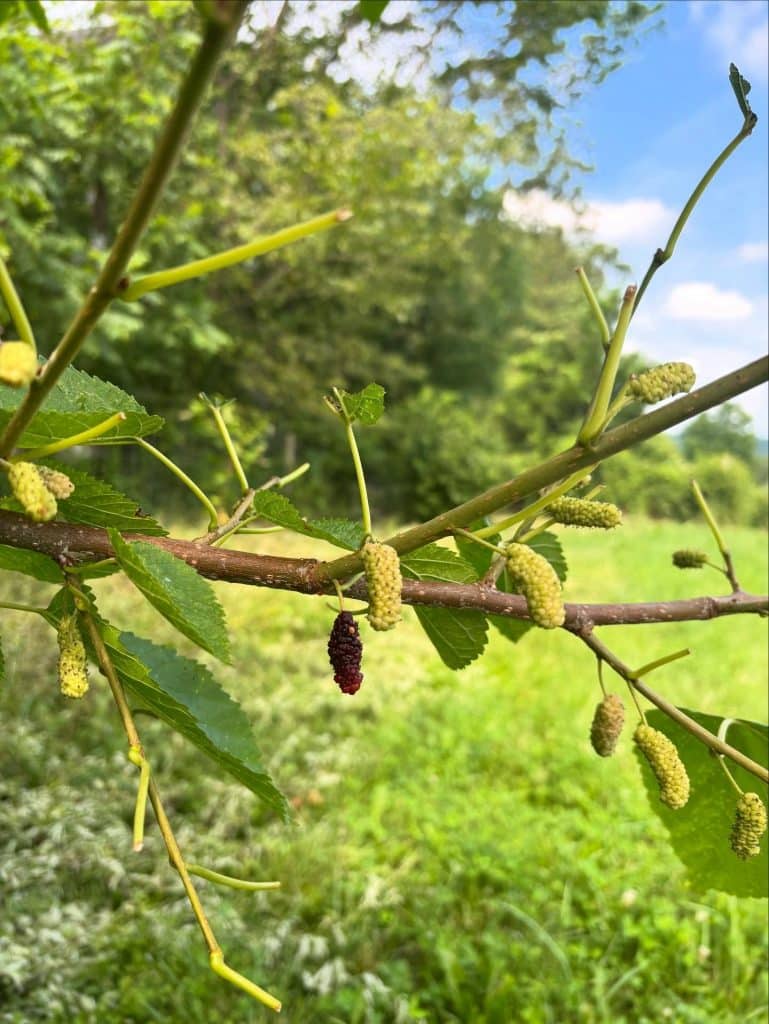
Red mulberry (Morus rubra) is a rare, native tree with edible berries. Red mulberries can be planted in partial to full sun or found in hardwood forests or valleys. Red mulberry trees produce alternate heart-shaped leaves that are sometimes lobed in younger plants. The tree has a fast growth rate. Native red mulberries can […]
Pycnanthemum virginianum – Virginia Mountain Mint
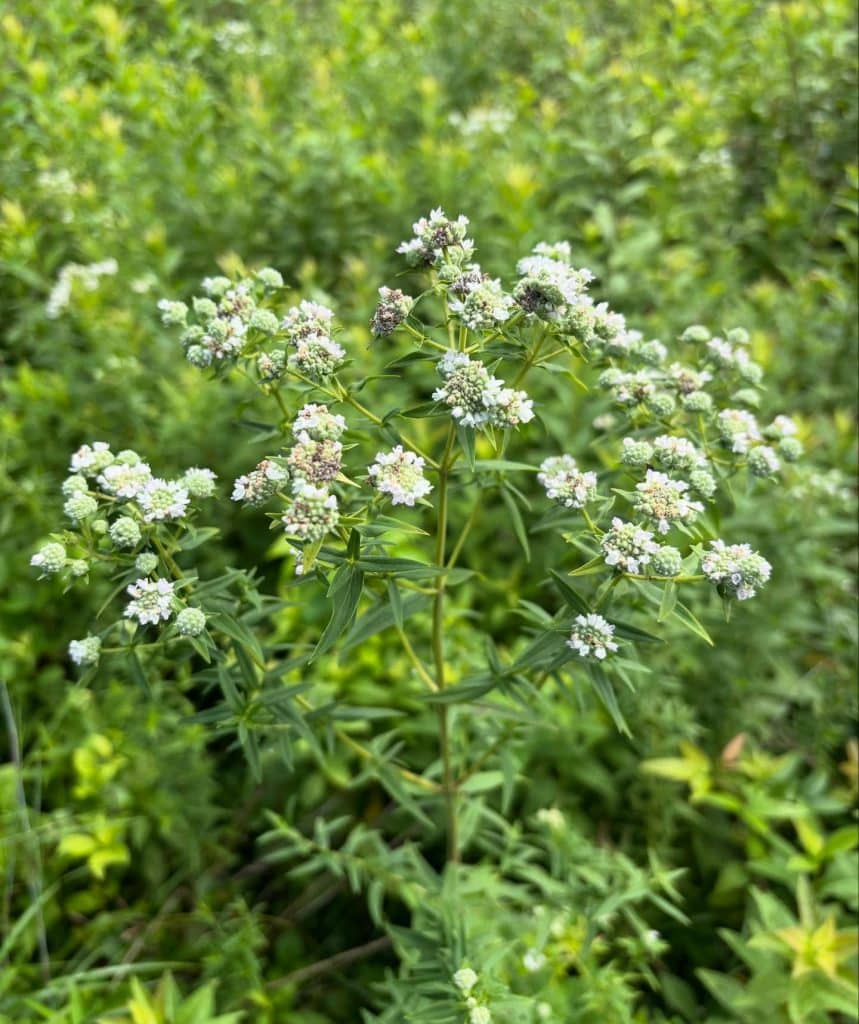
Virginia mountain mint (Pycnanthemum virginianum) is a native edible perrenial in the mint family. It can be found or planted in sunny areas such as meadows and fields. The plant can be identified by its narrow leaves and purple spotted flowers. Only a few flowers per cluster bloom at a time. Leaves and flowers have […]
Amaranthus retroflexus – Common Amaranth
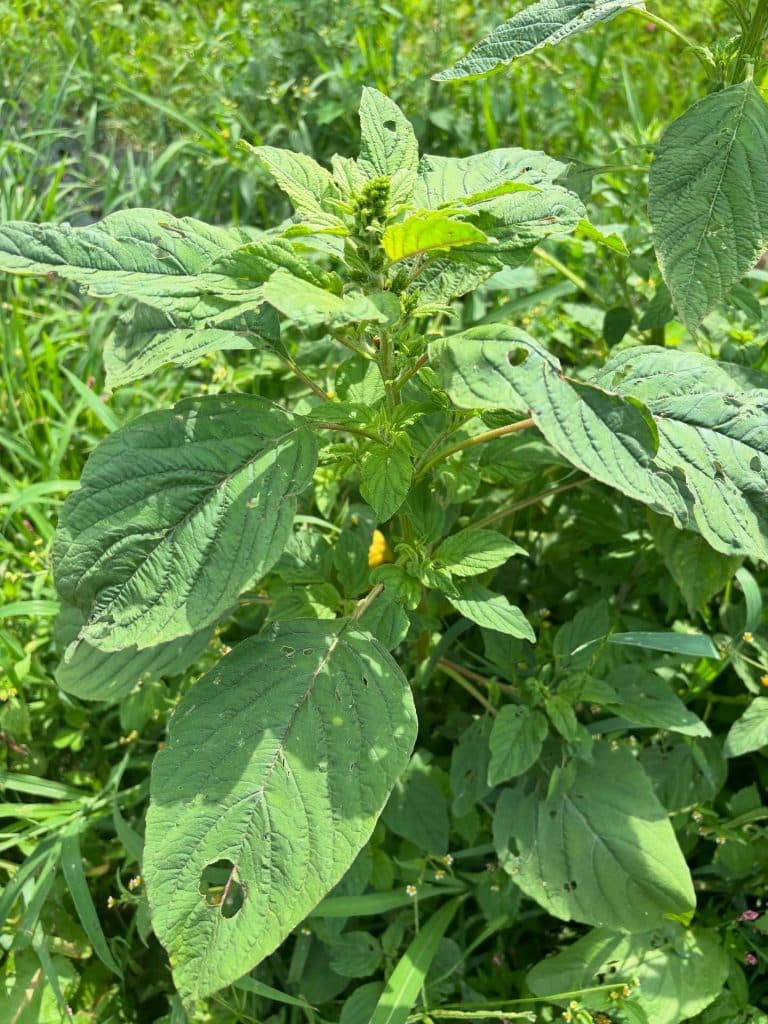
Common amaranth (Amaranthus retroflexus) is a native annual with edible leaves, stems, and seeds. It can be found in farms and gardens where it is usually considered a weed. The plant prefers full sun and disturbed soil. Common amaranth has reddish stems, leaves with wavy edges, green flowers, and black seeds. Leaves are best harvested […]
Solidago rugosa – Wrinkleleaf Goldenrod
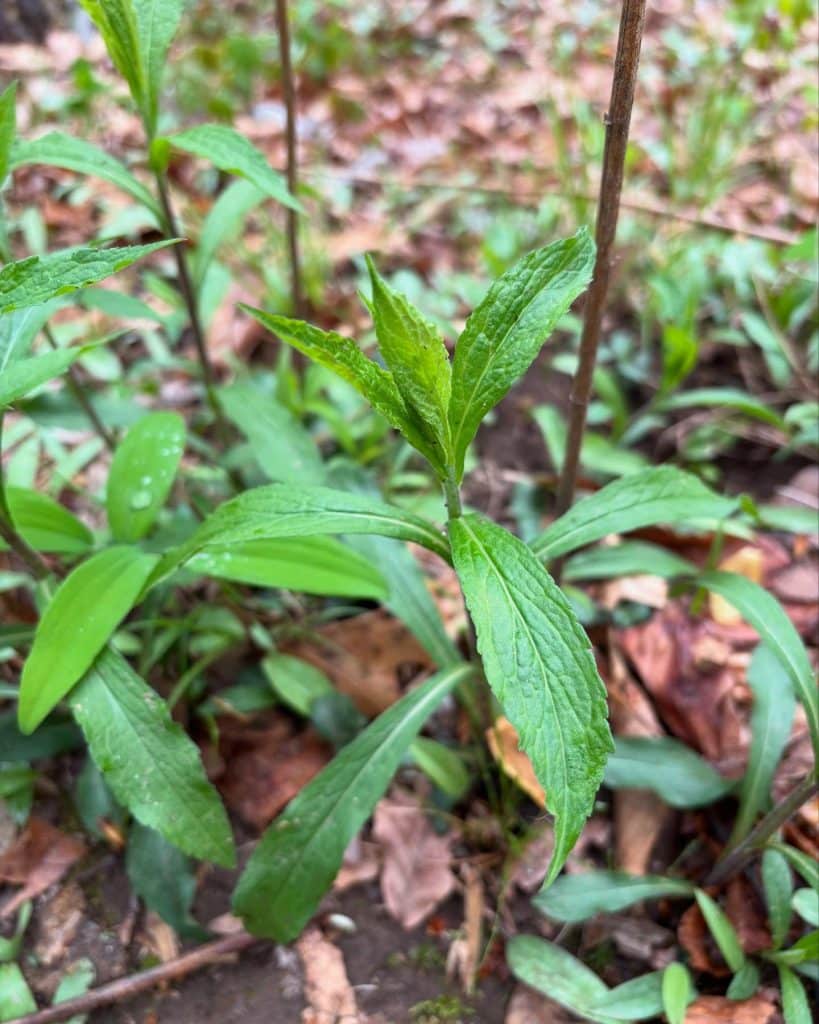
Wrinkleleaf goldenrod (Solidago rugosa) is a native perennial with edible and medicinal uses. There are over 75 species of goldenrod (Solidago spp.) in the United States. All above ground parts of goldenrods are edible, but taste varies depending on species. Goldenrods can be found in areas with well-drained soil and full sun. Wrinkleleaf goldenrod […]
Plantago rugelii – Blackseed Plantain
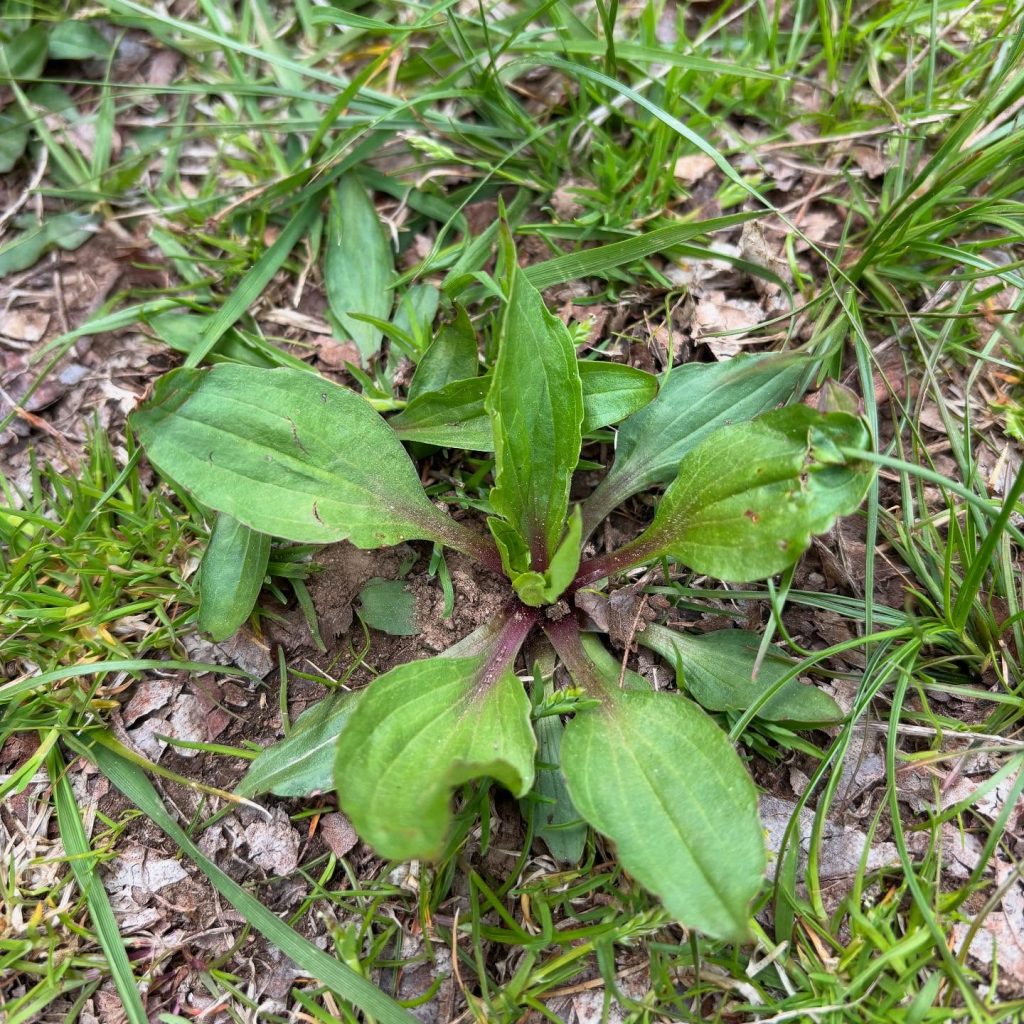
Blackseed plantain (Plantago rugelii) is a native perennial with edible and medicinal uses. Blackseed plantain can be found in areas with compacted soil such as hiking trails. Blackseed plantain can be identified by its hairless leaves with distinct veins. The petiole is often reddish. The plant produces elongated seed capsules. Young leaves can be chopped […]
Humulus lupulus – Common Hops
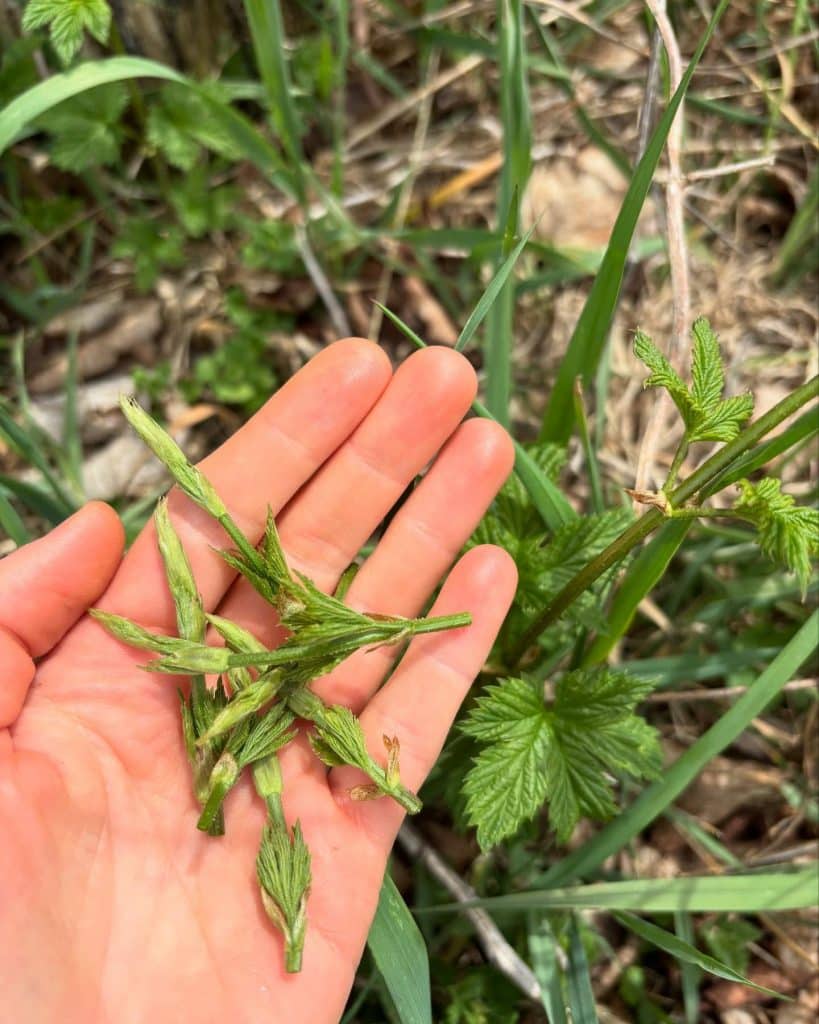
Common Hops (Humulus lupulus) are most known for their use in beer making, but they also produce edible shoots this time of year. Common hops are native to North America, but there are also varieties that are non-native. Hops can be found along forest edges, fences, and rivers. They prefer partial to full sun. Hops […]
Symplocarpus foetidus – Skunk Cabbage
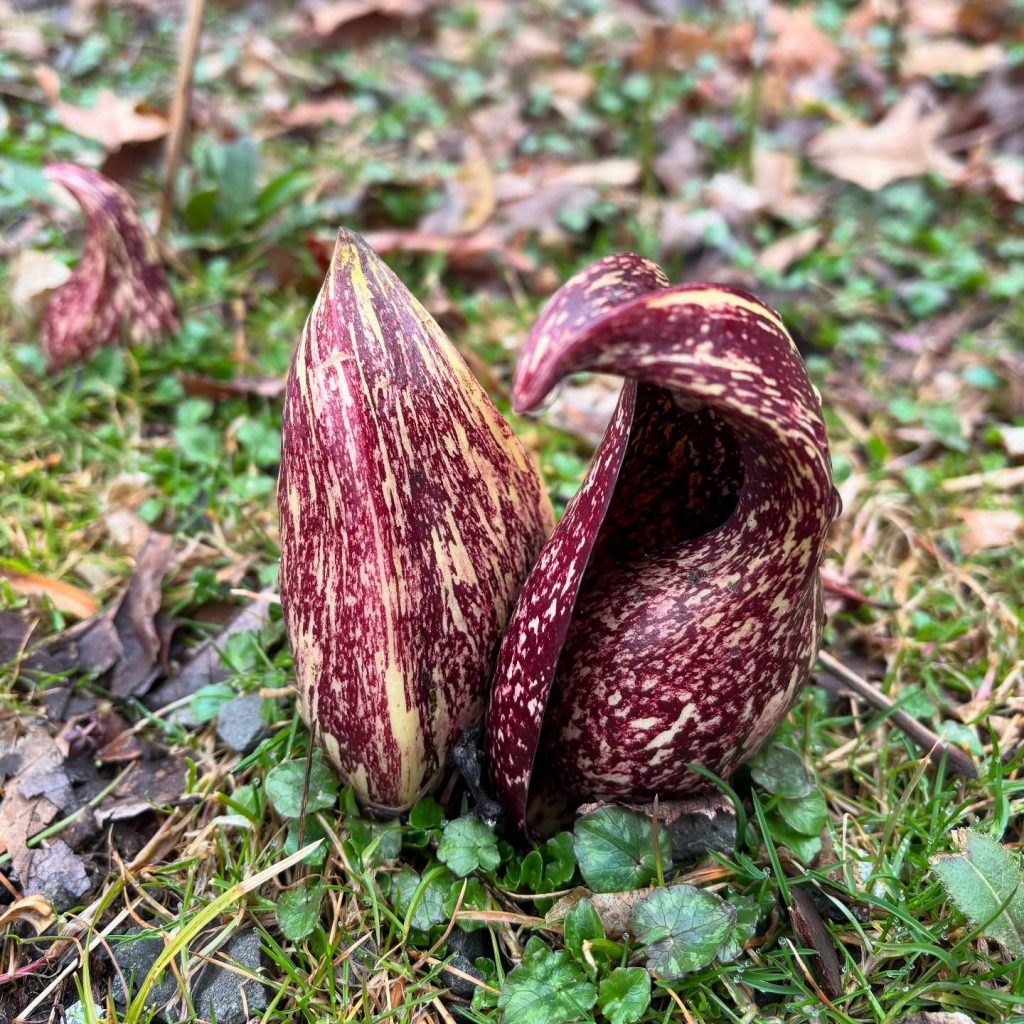
Skunk cabbage (Symplocarpus foetidus) is one of the first plants to appear in early spring. It is found in swamps and marshlands. Skunk cabbage starts off as a greenish or reddish leathery bract that holds circular flowers. Tightly coiled leaves appear in a week or two. Cutting or bruising the leaves cause a skunky smell. […]
Viburnum lantanoides – Hobblebush
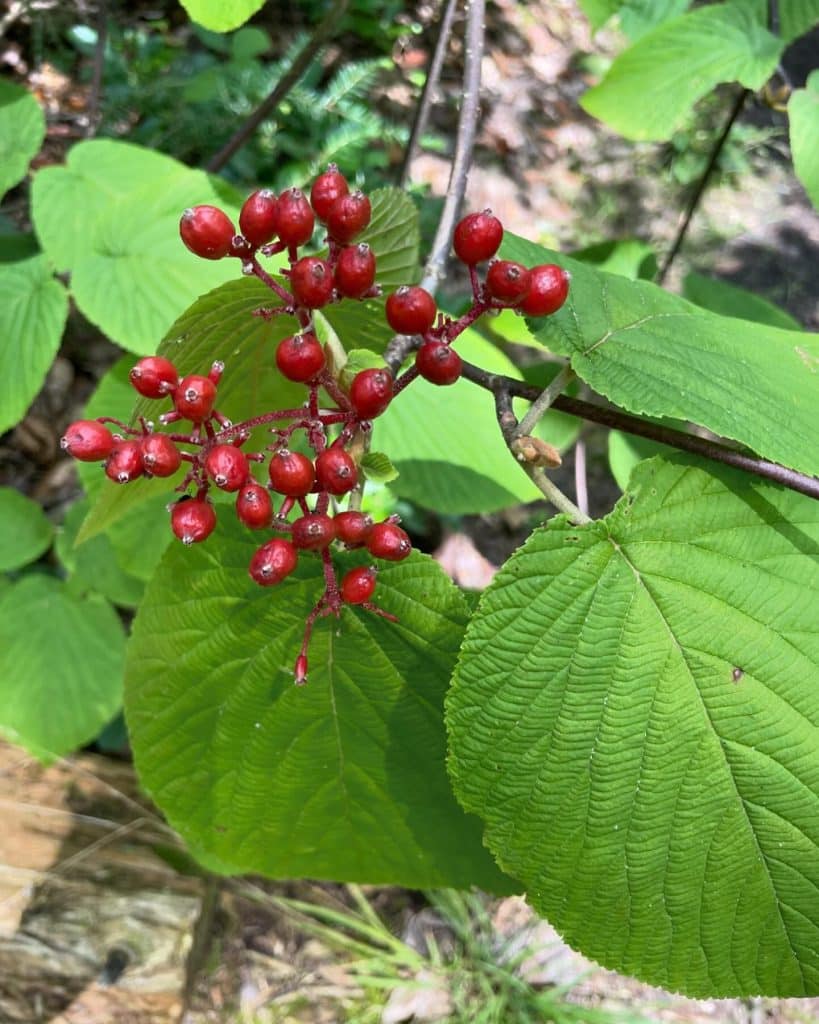
Hobblebush (Viburnum lantanoides) is a native shrub with edible berries. It can be found in rich, moist woodlands. The plant is very shade tolerant. Hobblebush grows particularly well along the Adirondacks where it can form dense patches. The plant produces clusters of flat-topped white flowers in the spring. Flowers become red berries that eventually ripen […]
Monarda didyma – Bee Balm
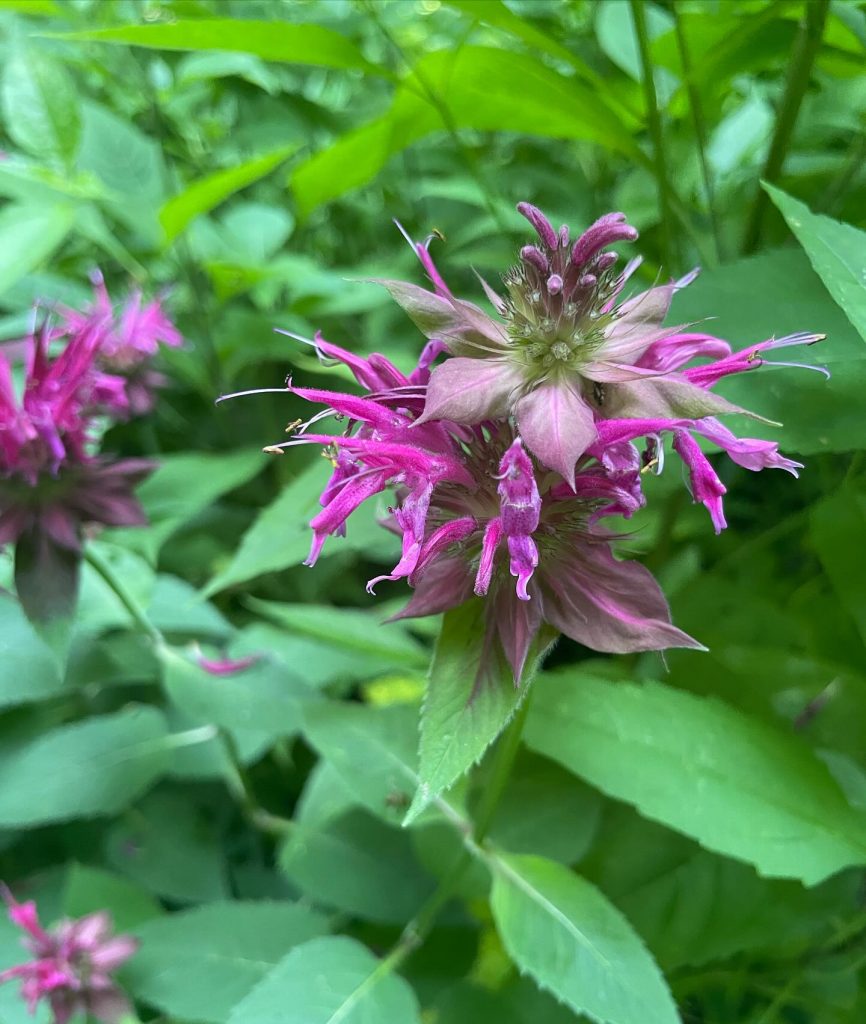
‘Raspberry wine’ bee balm (Monarda ‘Raspberry wine’) is a bee balm cultivar of the native Monarda didyma. Bee balm is named for the ability of its resin to sooth the pain from bee stings. It is a perennial with a history of edible and medicinal uses. Bee balm can be found in partial shade to […]
Rubus odoratus – Purple-flowering Raspberry
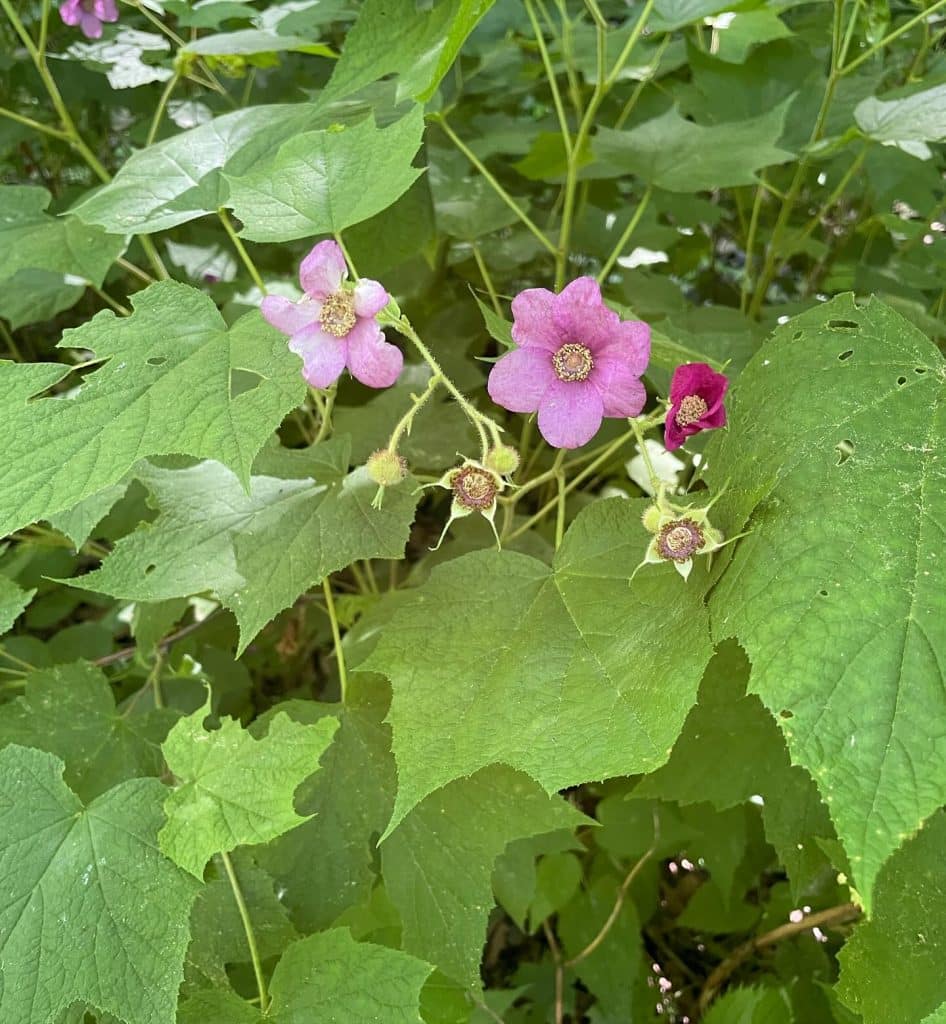
Purple-flowering raspberry (Rubus odoratus) is a native perennial with edible berries. The purple-flowering raspberry is found at the edge of trails. It can grow in sun to part shade. The plant has maple-like leaves and purple rose-like flowers. Canes are thornless, unlike other raspberry species. Flowers appear June-August. Flowers become red raspberries in mid-late summer. […]
Asclepias syriaca – Common Milkweed
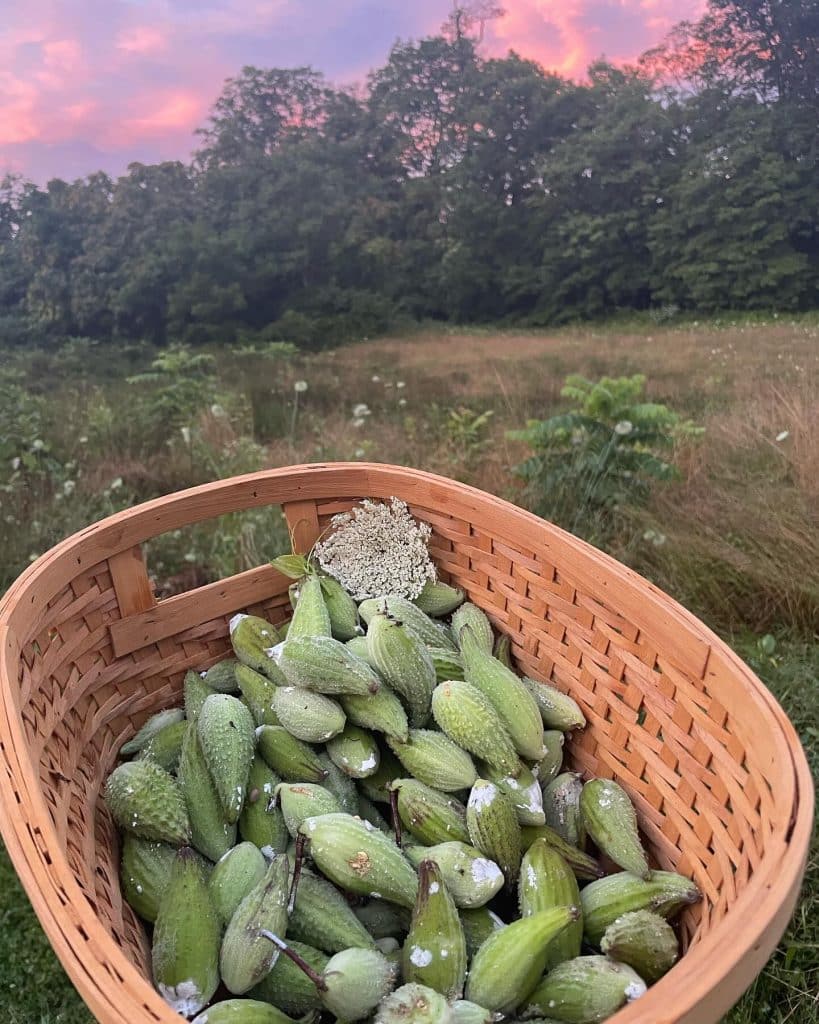
Common Milkweed (Asclepias syriaca) is a native perennial with multiple edible parts. Common milkweed can be found in meadows and fields which receive full sun. Leaves are opposite and oval-shaped with smooth edges. The stem is round and slightly fuzzy. It produces sap when broken. The pink flowers have five petals arranged in a […]
